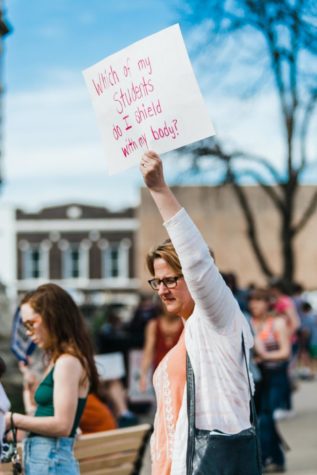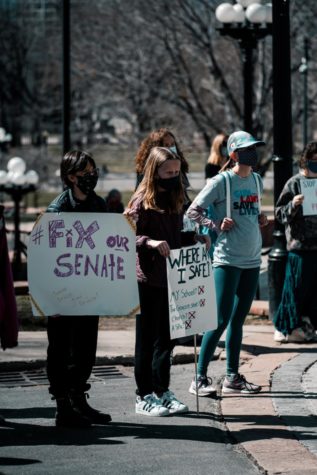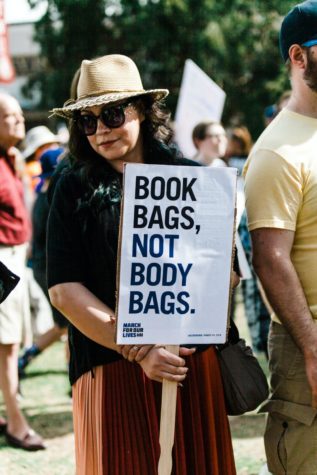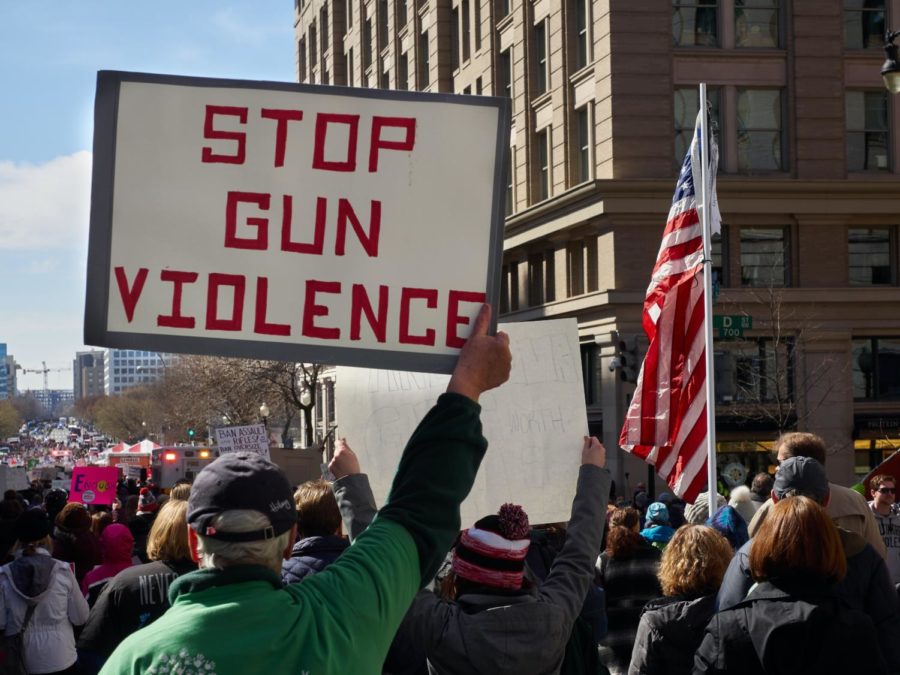Dear America, Your ‘Second Amendment Right’ Doesn’t Actually Exist
How the Second Amendment evolved into a misunderstanding of the ‘right to bear arms.’
Gun violence in America is a growing problem.
Many Americans champion the Second Amendment as one of the foundational elements of American democracy, claiming that any policy which threatens to take away the right to bear arms endangers the constitutional rights of the American people. And while the Second Amendment was important to our founding fathers, it does not preserve the individual right to bear arms, or even the right to self defense that many consider crucial to American democracy. Instead, it applies in the context of a militia, where citizens have the right to protect themselves against a tyrannical government. The belief that the Second Amendment pertains to individual gun rights has a complex history. It remains clear, however, that Americans never had the right to own a gun, and this is a misunderstanding that costs thousands of lives every year.
After declaring independence from Britain, the colonists wanted to ensure that they would never be subject to an oppressive government again, and created the Bill of Rights to protect certain inalienable rights. They included the Second Amendment as one of these inalienable rights, stating that “a well regulated Militia, being necessary to the security of a free State, the right of the people to keep and bear Arms, shall not be infringed.”
The key term in this amendment is “militia.” Our founding fathers aimed to provide a way for Americans to protect themselves against a tyrannical government, especially at a time when there was no national military. As stated in Article 1, Section 8 of the Constitution, Congress was granted the power “to provide for calling forth the Militia to execute the Laws of the Union, suppress Insurrections and repel Invasions,” indicating that the purpose of the militia was to protect the law and the security of the free state and prevent rebellions.
Congress was also granted the power “to provide for organizing, arming, and disciplining, the Militia, and for governing such Part of them as may be employed,” providing further context as to why the Second Amendment was included in the Bill of Rights. The founding fathers sought to permanently protect the rights of militias to use weapons for specific purposes, and their power was supposed to be checked by Congress. The founding fathers did not intend to protect the individual right to own a gun, or the right to self-defense; they never stated that self-defense was an inalienable right.
The main purpose of the Second Amendment was to prevent America from needing a standing army. The founding fathers believed that a full-time army would squash the freedom of individuals. Corrupt individuals could easily exploit an established army to attack the citizens, and without the individual ability to engage in self-defense, the freedom that our founders had fought so hard for would disappear. While it is hard to imagine the modern-day equivalent to an 18th century militia, given that we now have a nationally established military, the National Guard may be considered the closest thing. It is regulated by both the states and the federal government, and most members serve part-time, in addition to a full-time civilian job.
It is also important to understand how 18th century guns are incredibly different from today’s firearms. Priya Satia, a researcher at Stanford University, writes, “eighteenth-century guns were unlike guns today. They were heavy and unwieldy, prone to rust and rot, and slow and unreliable in their functioning. A mass shooting with an eighteenth-century gun was inconceivable. Nor was a gun useful in a moment of fury; it took too long to use and was too ineffectual in the heat of the moment. The very nature of the mechanical, slow process for loading and triggering made it a weapon of cool threat rather than hot-blooded violence.”
Our founding fathers created the Second Amendment for a society that used firearms that, in addition to being technologically different from today’s guns, served a completely different purpose. At its creation, the Second Amendment was about “ensuring the availability of particular kinds of arms, providing reassurance that if the federal government neglected to arm the militia, state governments might do so… The concern was to secure military-grade muskets for state militias who might only have access to their fowlers at home — national defense, not self-defense.” Today’s firearms are often used in personal conflicts or mass shootings, rather than in the context of militias.
The understanding that the Second Amendment applies to militias, and not individuals, continued into the mid-1900s, until the rise of Modern Conservatism in the 1970s and 1980s introduced the idea that the Second Amendment had been fundamentally misunderstood for nearly two centuries.
Ronald Reagan, as well as his attorney general, Edwin Meese, made the case that the Second Amendment protected the individual right to bear arms. Orrin Hatch, a Republican Senator from Utah, put forth a statement that claimed that the legal system had misinterpreted the Second Amendment. Supreme Court Justice Clarence Thomas, whose authority in the judicial branch was crucial to later cases concerning gun restrictions, also advocated for reinterpreting the Second Amendment.
The National Rifle Association also experienced a shift in the mid-1970s, when it went from being “a largely apolitical gun-safety organization to a mobilized political operation that was dedicated to fighting gun control…It both reflected and reinforced the growing conservatism of the Republican Party generally.” In 1977, under a new leader, the NRA shifted from supporting legislation that enacted restrictions on guns and sought to promote gun safety to advocating increasingly for looser gun laws.
Reagan, who took office in 1981, is often referred to as the “favorite son of the National Rifle Association.” He was a lifelong member of the NRA who opposed gun restrictions in the 1970s. After experiencing an attempted assassination in 1981, his views on gun rights shifted, indicating that his views on guns “appear to be influenced by his personal experiences with people aiming guns at him.” A decade after being shot, he spoke favorably about the Brady Bill, a bill that would strengthen gun control and that the NRA fiercely opposed. Reagan stated that the attempted assassination “might never have happened if legislation that is before Congress now — the Brady bill — had been law back in 1981.”
The late 20th century debate over the true origins of the Second Amendment came to a head in 2008, when the Supreme Court made a landmark decision regarding the right to keep a firearm at home. In District of Columbia v. Heller, a police officer who legally carried a handgun while working was denied a one-year license to keep a firearm at home. He argued that the Second Amendment protected his right to keep a functional gun in his home without a license.
The Supreme Court ruled that the Second Amendment protects the right for individual citizens to own firearms in a 5-4 decision. This decision was fairly partisan; four of the justices that voted in favor of the individual right to bear arms were very conservative. Interestingly, Justice Clarence Thomas, one of the people advocating for a renewed understanding of the right to bear arms in the 1970s, was one of the justices who voted in favor of the individual right to own a gun. The majority opinion stated that the Second Amendment could be rewritten in today’s society to “guarantee an individual right to possess and carry weapons in case of confrontation.” The four justices who dissented argued that the Second Amendment does not protect the individual right to self-defense and only pertains to militias.

This decision codified the idea that the Second Amendment relates to self-defense. The right to self-defense is now equated with the Second Amendment, giving many the impression that the right to defend oneself is a core democratic value. However, the need for self-defense was present in 18th century America, yet the founding fathers did not explicitly protect the right to self-defense anywhere in the Constitution, Bill of Rights, or other foundational documents. This provides corroboration for the belief that the Second Amendment was only ever meant to protect the rights of the militia.
Conservatives today hail the Second Amendment as crucial to American democracy, spreading the idea that it stands to protect the individual right to bear arms. The National Rifle Association claims that “you have the individual right to arm yourself,” and “the government cannot infringe on that right.” They argue that the use of the word ‘militia’ in the Second Amendment “refers to the American people” as a whole, drawing on the majority opinion in D.C. v. Heller that claims that since the militia was made up of the common people, the amendment pertains to the rights of the common people, regardless of their connection to military service. This is a flawed understanding – not only does the NRA fail to acknowledge the origins of the Second Amendment, but its rhetoric also suggests that the government is actively trying to take away the rights of the American people.
The NRA also suggests that “the Founding Fathers felt that citizens should be able to protect themselves against the government and any other threat to their wellbeing or personal freedom.” The first half of this sentence is true; our founders established the Second Amendment as a means to protect against a tyrannical government. However, claiming that the Second Amendment applies to any other threat to personal freedom is factually incorrect. The Second Amendment only explicitly mentions firearms in connection with militias, and the idea that this can be applied to anything that limits freedom is vague and dangerous.
The NRA further claims that “though times have changed dramatically, the need for defenses afforded by the Second Amendment has remained much the same.” While the threat of tyrannical government remains, at this point in America’s history, our government is well-established enough to protect the rights of the people. We now have a national military; this has drastically changed the application of the Second Amendment. We also have two and a half centuries of history that provide protocols for how to handle governmental misconduct, so the threat of the government using the military to attack the American people is not as prevalent.
Ironically, those who are most in favor of gun rights are the ones actively encouraging tyrannical government. A prime example of this is the January 6th, 2021 riot, when protesters, who claimed that the 2020 election was ‘stolen,’ used violence and firearms to storm the Capitol and, in the process, endangered government officials. They exploited the Second Amendment to directly prevent democracy, using a value they claim fundamental to American democracy to contort American democracy itself.
Those who exploit loose gun legislation also endanger the freedom of speech and the right to peaceful protest that Americans are entitled to. As one New York Times article explains, using guns in protests is increasingly common. “Deploying the Second Amendment in service of the First has become a way to buttress a policy argument, a sort of silent, if intimidating, bullhorn.” Many of these protests claim that the First and Second Amendments are both in danger, and the best way to protect them both is to use them together. However, it is very clear that the First Amendment only protects the right to peacefully protest, and the use of open-carry to intimidate opposing groups or factions is unconstitutional.

It is also ironic that many hail the right to bear arms as a symbol of ultimate freedom while overlooking the fact that the Declaration of Independence, the very basis for American freedom, clearly outlines a right to “life, liberty, and the pursuit of happiness.” It is convenient that people ignore the fact that above all else, Americans are promised the right to life, yet also claim that when guns take thousands of lives every year, there is no need to reexamine the significance of the Second Amendment.
Many American politicians who argue in favor of gun rights are financially motivated to do so. The National Rifle Association spends millions of dollars every year lobbying Congress and state governments to protect gun rights. They are quick to declare any legislation that restricts the use of guns a clear violation of the Second Amendment. The gun lobby is a clear conflict of interest; government officials cannot make unbiased decisions as to how to protect the American people when they are given financial incentives to pass certain legislation.
The National Rifle Association spent $30 million on Trump’s presidential campaign in 2016. In wake of the Uvalde shooting, where nineteen elementary schoolers and two teachers were killed, Trump claimed that Democrats were exploiting the shooting to push a political agenda. In a speech at an NRA convention, he said, “sadly, before the sun had even set on the horrible day of tragedy, we witnessed a now familiar parade of cynical politicians seeking to exploit the tears of sobbing families to increase their own power and take away our constitutional rights.”
While I appreciate Trump calling for increased access to mental health resources and a reconciliation between Democrats and Republicans, his claim that there are people using mass shootings as a convenient excuse to limit American freedom is not grounded in reality. The “cynical politicians” he claims are using tragedy to push legislation are the conservative officials who actively loosen gun restrictions in response to mass shootings. They argue that the best way to limit future violence is to introduce more guns into the situation, as a good guy with a gun can apparently always overcome a bad guy with a gun.
Many of the politicians arguing for less restrictive gun laws are also not exposed to the threat that guns impose on peoples’ daily lives. They travel with personal security and send their children to schools with high levels of security. They are removed from the danger that firearms impose, and cannot relate to the fear that many Americans have about gun violence. This is particularly clear with Reagan, whose stance on guns changed after getting shot. Prior to his attempted assassination, he advocated for lenient gun laws, but his stance shifted after he understood firsthand the lethal nature of guns.

Mass shootings are becoming more and more common, meaning that guns pose more of a threat to American lives every day. In the last year, shootings have occurred in schools, grocery stores, nightclubs, movie theaters, places of worship, dance studios, etc. While those who oppose gun legislation may argue that the individual right to bear arms allows citizens to easily defend themselves in the case of a mass shooting, the recent shooting in Colorado Springs provides a different story. There, the gunman was tackled by a man and hit over the head with a handgun, rendering him unable to shoot.
The fact that this man used a gun not as a means to escalate the violence, but as a weapon of physical force, provides a picture as to how violence can be combated. In this shooting, the gunman was subdued through physical defense tactics and quick thinking, not more bullets. The recent shooting in Monterey Park tells a similar story; there, the gunman was subdued by hand-to-hand combat. While many claim that a gun is a great weapon for self-defense, guns escalate any situation and are incredibly deadly. Instead, as many safety educators argue, everyday items, such as umbrellas or flashlights, can serve as effective self-defense weapons.
Many high schoolers have grown up seeing mass shootings in the news, which has diminished their sense of safety. When the Sandy Hook shooting happened in 2012, current Bronx Science students were in elementary school. This shooting, along with later school shootings, provoked ongoing fear for students. Niha Roy ’23 said, “The Sandy Hook shooting happened when I was in elementary school. I remember getting home and watching the news and thinking, how can this happen? The school is, what, three hours away?”
Newtown is about an hour drive from Bronx Science, and the shock of twenty elementary schoolers being brutally shot and killed has not worn off. The number of school shootings that have occurred over the course of our school years serves as a grim reminder of America’s gun violence problem. As the number of mass shootings rises, there are people who have survived multiple mass shootings. One freshman who survived the Oxford High School shooting in November 2021 survived the Michigan State University shooting this month. She states that she had just begun feeling comfortable in crowds again, before the shooter killed three students and injured five others. This is unthinkable – how have we let our country become a place where, not only are active shooter drills routine, but after enduring the horrors of a mass shooting, you could very well experience another one not even two years later?
In approaching the right to bear arms today, most Americans either argue for incredibly restrictive or incredibly lenient gun laws. Yet we fail to understand how different America looked at the creation of the Second Amendment. If our founding fathers saw today’s society, where person after person is killed by gun violence, and gun violence is the leading cause of death for American children, they would not approve of how the Second Amendment is used to prevent gun safety legislation. When people are killed daily by firearms that should be regulated, we need to reexamine what the Second Amendment actually means, and draft legislation that prevents record numbers of mass shootings from occurring each year.
Niha Roy ’23 said, “The Sandy Hook shooting happened when I was in elementary school. I remember getting home and watching the news and thinking, how can this happen? The school is, what, three hours away?”
Orli Strickman is an Arts and Entertainment Editor for ‘The Science Survey.’ She seeks to represent stories that do not receive a lot of mainstream...











